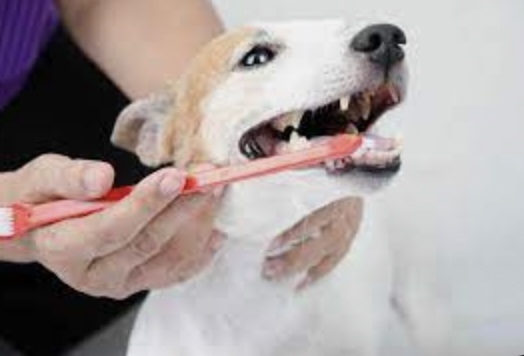How To Care For Your Dog’s Dental Health

Walking, feeding, and grooming are among the core responsibilities of caring for a dog. Though these tasks are paramount, pet care should also include dental health. Unfortunately, most pet parents overlook their canine’s teeth and gums, resulting in periodontal disease and other adverse health conditions. As no one wants to see their dog suffer, developing a routine that prioritizes dental care is essential. Continue reading for advice.
Find A Veterinarian Dentist
While taking your dog to the vet can prevent or detect signs or oral health problems, finding an expert that specializes in pet dental care is essential. A board-certified veterinary dentist is an animal doctor with extensive education, training, and in-field experience in pet dentistry. They can examine, clean, fill, or extract teeth and gums to ensure optimal health and wellness. Pet parents are encouraged to take their furry family members to the dentist annually (or whenever they sense signs of trouble).
At-Home Assessments
Early detection is always the most effective way to prevent underlying conditions from wreaking havoc on your pet’s health. Ultimately, pet parents should regularly evaluate their dog’s teeth at home and pay attention to potential problems.
Wait until your dog is calm to perform an evaluation. Wash your hands and put on rubber gloves. Check the outside of their face for swelling. Next, smell their breath for any foul odors. Then pull back your pet’s lips on the front and sides, exposing their teeth and gums. Check for receding gums, discoloration, loose teeth, inflammation, blood, or pain (when touched).
Brush Your Dog’s Teeth
Humans aren’t the only ones that need to brush their teeth regularly. Keeping your canine’s teeth and gums clean, white, strong, and disease-free requires routine brushing. Of course, the idea of brushing your pet’s teeth might seem crazy, time-consuming, and frustrating, but it’s essential.
Pet parents should brush their dog’s teeth at least two to three times a week (or more, depending on the dental vet’s suggestions). Sure, your pup might not like the idea at first, but with consistency and a gentle touch, they’ll overcome their fears.
Begin by ensuring you have the appropriate tools, including a doggy toothbrush, pet-friendly toothpaste, and rubber gloves. Brush their teeth for 30 seconds in a downward direction, ensuring to get the outside of all their teeth and gums. If you’re having trouble brushing your dog’s teeth, you can always consider dental dog wipes to make the experience easier for everyone.
Dental Rinses & Water Additives
Like mouthwash for humans, dental rinses and water additives are the perfect aids for optimal oral health in dogs. These products contain vitamins, minerals, supplements, and enzymes to help keep your dog’s teeth and gums clean and healthy. They also come in a variety of flavors to appeal to your pup. Add a few drops to their water daily, and notice the dramatic difference in your dog’s oral health and hygiene.
Dental Treats And Dog Chews
While nothing can replace the effectiveness and efficiency of professional cleanings and regular brushings at home, dental treats and chews can help keep your dog’s teeth and gums healthy. They’re also a lot more enjoyable for your pup.
Dental treats contain ingredients that help remove plaque buildup, clean teeth, and freshen breath. Giving your dog one every day will keep periodontal disease at bay.
Dog chews are also effective for removing plaque buildup. Chews comprised of meat also contain enzymes that promote good oral health. However, rubber dog chews last longer than edible options while providing the same benefits.
Animal lovers see their dogs as a member of the family. They’d do anything to care for their pups to ensure they live long, happy, and healthy lives. Be that as it may, it’s not uncommon for pet parents to overlook the importance of dog dental hygiene. If you’ve missed the mark on caring for your fur baby’s canines and gums, use the above tips to get back on track.




























